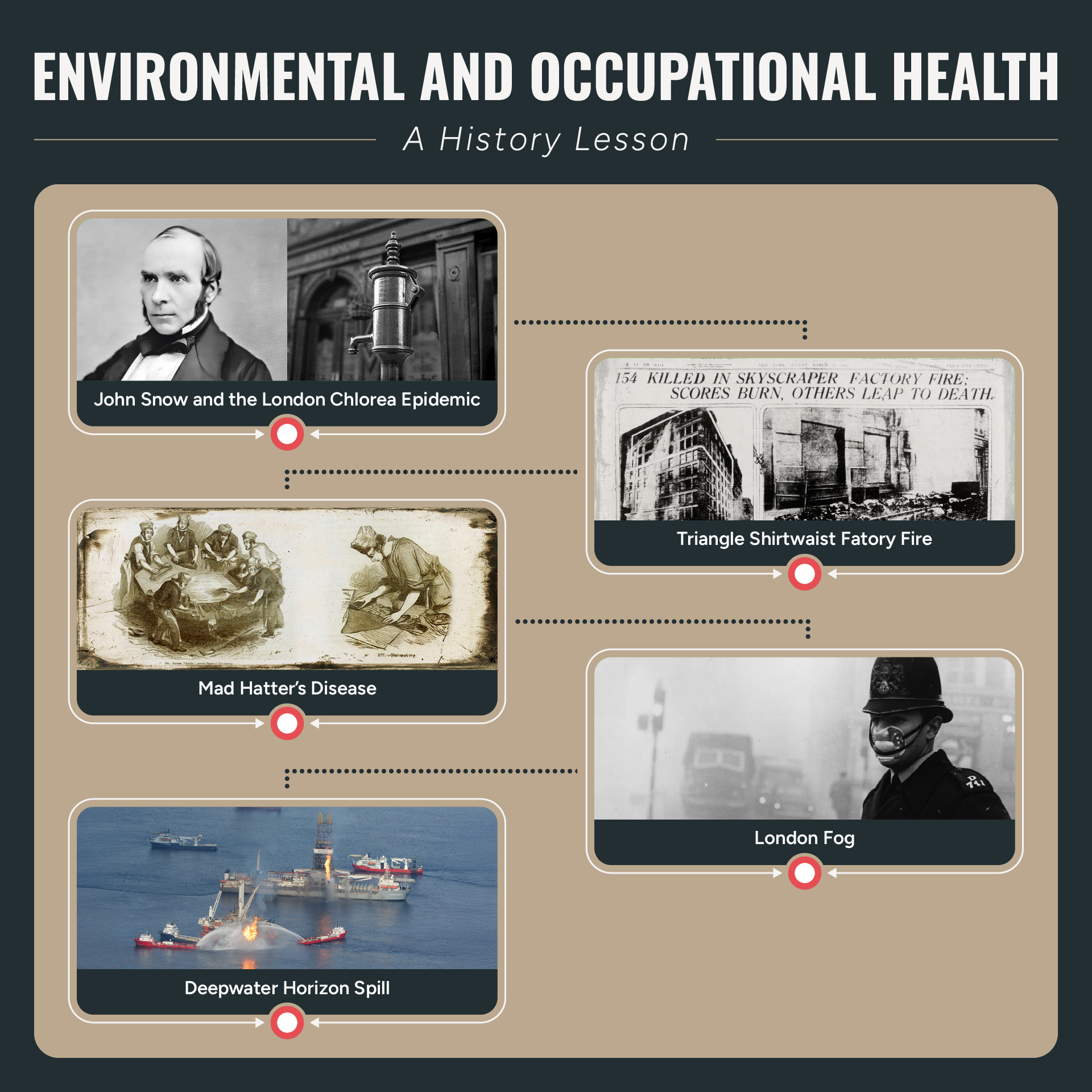
-
505,763
John Snow and the London Chlorea Epidemic
-
1415,1009
Triangle Shirtwaist Factory Fire
Event: A 10-story building in New York City was home to a blouse factory. The doors and stairwells were locked to prevent the workers, mostly young women, from taking unauthorized breaks. In 1911, a fire in the factory immediately engulfed the building and the many yards of clothing scraps inside. Nearly 150 people died in the fire, including many who jumped to their deaths from upper story windows.
Outcome: Prompted worker safety and other laws and policies to improve building access, emergency evacuation, fireproofing, sprinklers, and work hours.
-
505,1272
Mad Hatter's disease
Event: The making of hats in the mid-1800s required the use of a process called felting, which led to vapors of mercury inhaled. "Mad hatter's disease" refers to occupational mercury poisoning caused by chronic exposure among hat makers. The phrase "mad as a hatter" was coined due to the tremors and other neurological symptoms associated with exposure.
Outcome: The National Academy of Medicine first described the hazards of inhalational mercury exposure among hat makers in 1869. The illness persisted among American hat makers, who were only loosely protected by law, until around 1940.
-
1415,1535
London Fog
Event: In 1952, an inversion event trapped airborne pollutants into a thick fog over the city of London. The pollution was especially bad because of excessive coal burning due to the cold weather. The cold air, lack of wind, and heavy pollutant concentration formed a thick cloud over the city for 4 days.
Outcome: Directly led to the U.K. Clean Air Act of 1956 (The U.S. did not follow suit with a similar Act until 1963).
-
505,1798
Deepwater Horizon Spill
Event: In 2010, this offshore drilling rig exploded while drilling in the Gulf of Mexico, off the coast of Louisiana. The explosion led to fires that burned for several days until the rig sank, causing the largest oil spill in U.S. waters to-date.
Outcome: Litigation over this disaster is expected to continue for many years. Health effects associated with exposures to the event are still being evaluated, but experts agree that it may also take years to determine both the long-term environmental and potential population health impacts.
Event: An outbreak of cholera in the mid-19th century was decimating London. John Snow mapped the homes for cholera cases and the location of drinking water pumps. He deduced that the Broad Street Pump was the source of the epidemic, as this pump was fed directly from the filthy Thames River.
Outcome: The handle was removed from the pump, and the outbreak stopped.